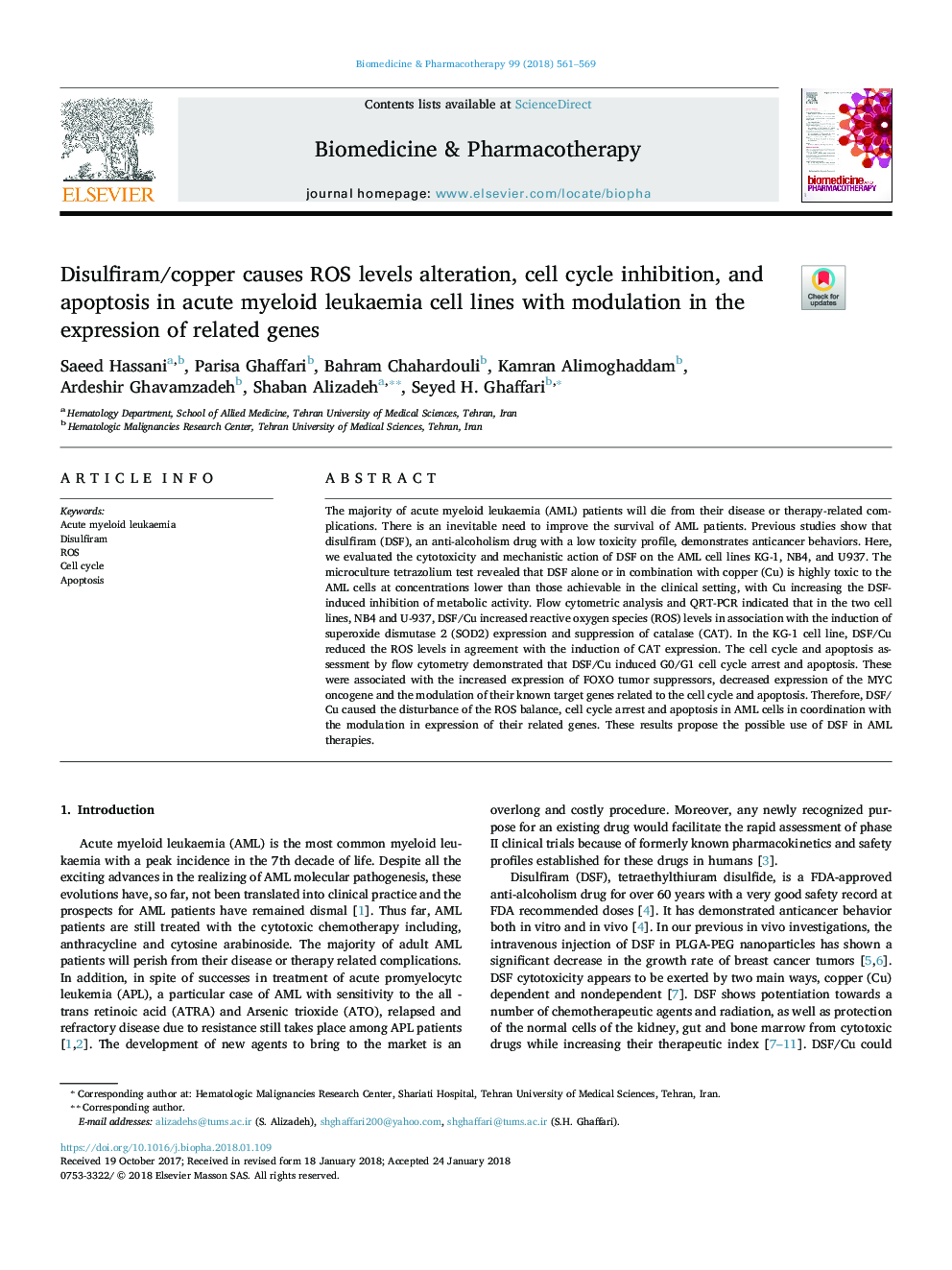| Article ID | Journal | Published Year | Pages | File Type |
|---|---|---|---|---|
| 8526292 | Biomedicine & Pharmacotherapy | 2018 | 9 Pages |
Abstract
The majority of acute myeloid leukaemia (AML) patients will die from their disease or therapy-related complications. There is an inevitable need to improve the survival of AML patients. Previous studies show that disulfiram (DSF), an anti-alcoholism drug with a low toxicity profile, demonstrates anticancer behaviors. Here, we evaluated the cytotoxicity and mechanistic action of DSF on the AML cell lines KG-1, NB4, and U937. The microculture tetrazolium test revealed that DSF alone or in combination with copper (Cu) is highly toxic to the AML cells at concentrations lower than those achievable in the clinical setting, with Cu increasing the DSF-induced inhibition of metabolic activity. Flow cytometric analysis and QRT-PCR indicated that in the two cell lines, NB4 and U-937, DSF/Cu increased reactive oxygen species (ROS) levels in association with the induction of superoxide dismutase 2 (SOD2) expression and suppression of catalase (CAT). In the KG-1 cell line, DSF/Cu reduced the ROS levels in agreement with the induction of CAT expression. The cell cycle and apoptosis assessment by flow cytometry demonstrated that DSF/Cu induced G0/G1 cell cycle arrest and apoptosis. These were associated with the increased expression of FOXO tumor suppressors, decreased expression of the MYC oncogene and the modulation of their known target genes related to the cell cycle and apoptosis. Therefore, DSF/Cu caused the disturbance of the ROS balance, cell cycle arrest and apoptosis in AML cells in coordination with the modulation in expression of their related genes. These results propose the possible use of DSF in AML therapies.
Related Topics
Health Sciences
Medicine and Dentistry
Oncology
Authors
Saeed Hassani, Parisa Ghaffari, Bahram Chahardouli, Kamran Alimoghaddam, Ardeshir Ghavamzadeh, Shaban Alizadeh, Seyed H. Ghaffari,
